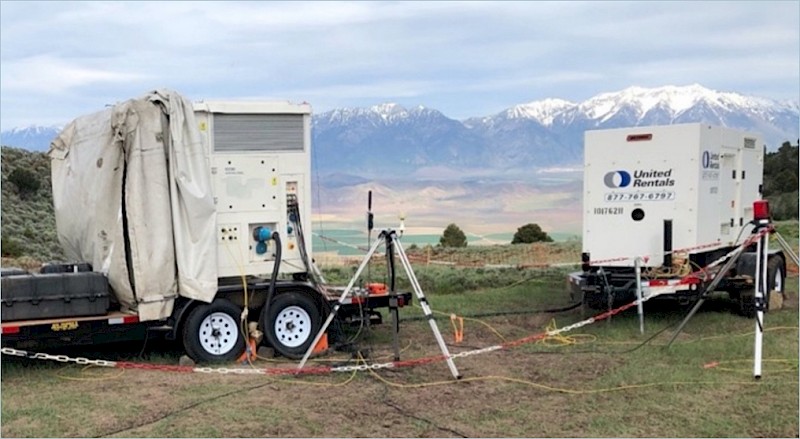Ivanhoe Electric confirms Cu-Au mineralization below former Mammoth mine


Speaking at the annual Denver Gold Forum on Tuesday, Ivanhoe chairman and CEO Robert Friedland said: “We continue to be astounded by the high-grade mineral potential of the Tintic district. A lot of copper, gold, silver, lead and zinc ended up at Tintic, and it certainly did not fall from the sky. These results from the New Park Reserves area continue to demonstrate that the old-timers did not mine all of the high-grade copper, gold and silver. In addition, these results provide further evidence of the presence of one or more large-scale porphyry copper-gold deposits located at depth at Tintic.
“Using our proprietary high-powered Typhoon geophysical surveying system, we completed a 72-km2, three-dimensional induced polarization and resistivity survey and imaged three large-scale anomalies – each comparable with the scale of the nearby Bingham Canyon copper-gold mine,” Friedland said.
Bingham Canyon, more commonly known as the Kennecott copper mine among locals, is an open pit operation owned by Rio Tinto. Over the past 119 years, it has milled more than 2.7 billion tonnes of copper-gold ore and produced over 20 million tonnes of refined copper metal and more than 28 million oz. of gold.
According to Friedland, Ivanhoe’s geologists continue to identify new features that support the thesis that one or more of these Typhoon anomalies may be the porphyry targets that have produced all of the copper and precious metals in the historic Tintic district.
“These anomalies are located at depth from surface, meaning any potential mining operation at Tintic would likely be an underground operation,” he added.
Mineralization in the Tintic district was first discovered in 1869, and by 1871 significant mining camps were established in the nearby city of Eureka and the now defunct towns of Silver City and Diamond. The area saw nearly continuous mining operations from 1871 through to 2002 with variations in the level of activity and commodity extracted.
The Mammoth mine was historically one of the most significant mines in the Tintic mining district, operating between the late 1890s and the 1930s. While much of its early productive history went unrecorded, from 1901 onwards Mammoth is known to have produced approximately 1.18 million tonnes of ore grading 9.7 g/t gold, 349 g/t silver, 1.42% copper and 1.39% lead.
This post has been syndicated from a third-party source. View the original article here.




